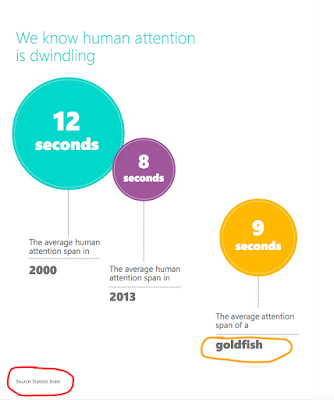Back on October 9, 2017 I blogged about how It must be true, since I read it in a book. Unfortunately books sometimes are not always backed by careful research. In a another post on August 14, 2020 titled Toastmaster magazine is spreading nonsense from John Bowe about how common the fear of public speaking is I described how John Bowe’s 2020 book I Have Something to Say had incorrectly claimed (using baseless numbers originally posted by Statistic Brain) that:
“According to the National Institutes of Health, 74 percent
of Americans suffer from speech anxiety.”
I wondered whether that nonsense also was in other books, so
I looked at Amazon, on Google Books, and elsewhere. Sixteen other books had
that baseless percentage, so they all get one of my Spoutly awards. In
chronological order they are:
2013
Jared Bauman, Simple Steps to Master Public Speaking
“According to a recent fear of public speaking study
performed by the National Institute of Mental Health, 74% of people suffer from
some form of speech anxiety.”
Cindy Locher, Vanquish Your Fear of Public Speaking
“Fear of public speaking is the number one fear in America.
If you're one of the 74% of Americans who fear public speaking, this five-step
process can dramatically increase your comfort and confidence.”
2014
Cheryl R. Stinchcomb, Presentation Skills That Rock:
captivating your audience in the digital era
“Can you believe that 74% of people suffer from speech
anxiety?”
Jennifer Witter, The Little Book of Big PR
“According to the National Institute of Mental Health
(NIMH), 74 percent of people have fear of public speaking.”
Bill Hoogterp, Your Perfect Presentation
“According to the National Institutes of Health, 74 percent
of Americans suffer from a fear of public speaking.”
2015
Anthony Fasano, Engineer Your Own Success
His Table 6.1 reproduced the numbers from a Statistic Brain
web page. (74% of people, 75% of women, and 73% of men suffer from speech
anxiety).
Eamonn O’Brien, How to Make Powerful Speeches 2ed
“According to the National Institute of Mental Health, this
fear is so pervasive that 74 per cent of American adults (and the figures are
worse elsewhere) admit to some degree of speech anxiety.”
D.J.D. Carducci and Lisa Kaiser, Shyness: The Ultimate Teen
Guide
“According to a 2013 report from the National Institute of
Mental Health, 74 percent of Americans fear speaking in public, far more than
the 40 percent of us who are shy.”
2016
Thomas Miller, Fear Busters: 14 ways to kick fear to the
curb
“Studies indicate that 74% of the population is afraid of
public speaking and 68% fear dying.”
Kenny Nguyen, Gus Murillo, Robert Killeen, Luke Jones, The
Big Fish Experience
“According to the National Institute of Mental Health, the
fear of public speaking, which is called glossophobia, is the number one fear
in America (that’s right, over spiders, heights, and even death). A whopping 74
percent of Americans are said to suffer from this fear.”
2017
Deborah Shames, Out Front
“This may not sound like a surprising admission, since 74
percent of the US population surveyed in 2013 shares a fear of public
speaking.”
2018
Rick Lewis, Confident Under Pressure
“The National Institute of Mental Health reports that 74
percent of people suffer from speech anxiety.”
2019
Sara Latta, Scared Stiff
“According to statistics from the National Institute of
Mental Health (NIMH), fear of public speaking is the most common phobia, with
nearly three out of every four people (74 percent) surveyed saying they have
this fear.”
2020
Cody Smith, Public Speaking Panic: how to go from
stage-fright to stage-ready in less than 24 hours
“Not to mention, a whopping total of 74% of people suffer
from speech anxiety.”
Alex Crickets, Public Speaking
“Entrepreneur.com has published research from the National
Institute of Mental Health, which claims that 74% of adults suffer from a fear
of public speaking.”
Michael J. Gelb, Mastering the Art of Public Speaking: 8
secrets to transform fear and supercharge your career
“Seventy-four percent of Americans suffer from glossophobia,
the fear of public speaking.”
Back on March 1, 2015 I had blogged about A high mound of
manure from Bill Hoogterp about fear of public speaking.































